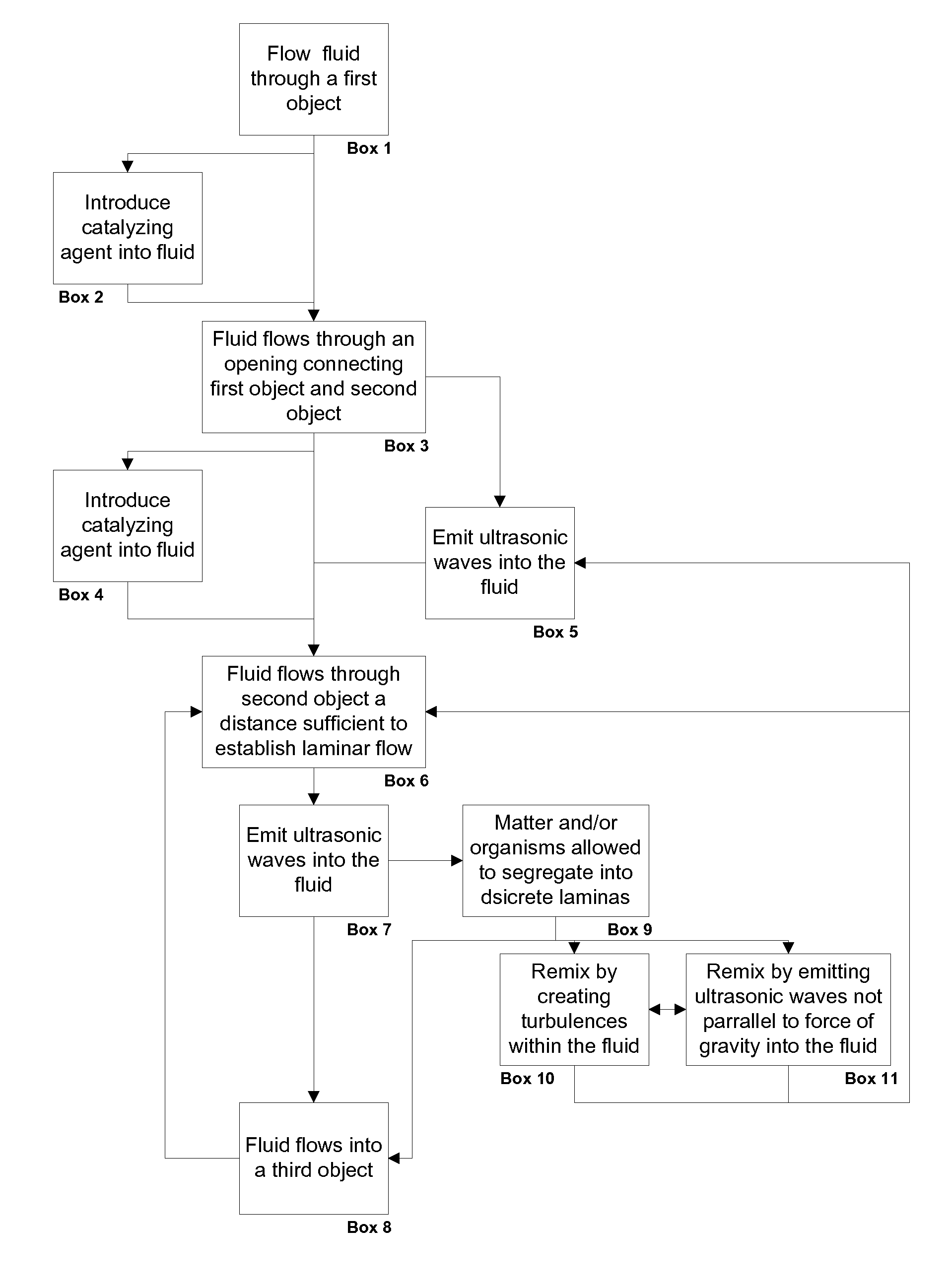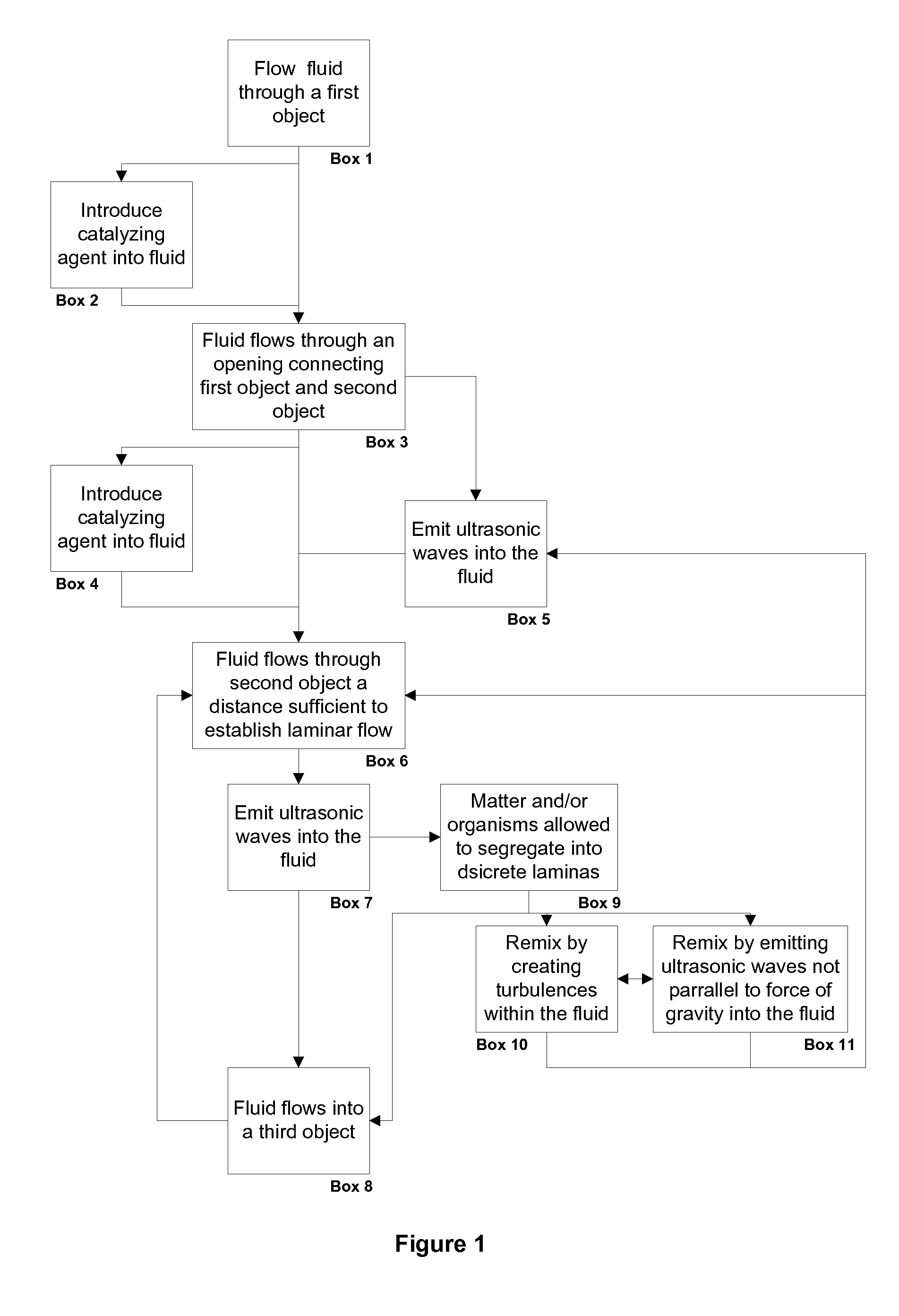Method of ultrasonically treating a continuous flow of fluid
a technology of ultrasonic treatment and fluid, which is applied in the direction of cleaning using liquids, energy-based chemical/physical/physical-chemical processes, and disinfection. it can solve the problems of weakened bonds, strained bonds, and weakened bonds holding the matter together, so as to increase the amount of treatment received, increase the effect of ultrasonic treatment, and increase the exposure to ultrasonic waves
- Summary
- Abstract
- Description
- Claims
- Application Information
AI Technical Summary
Benefits of technology
Problems solved by technology
Method used
Image
Examples
Embodiment Construction
[0051]FIG. 1 is a flow chart depicting possible embodiments of the method of the present invention. The method begins, as indicated by Box 1, by flowing a fluid to be treated through a it object such as, but not limited to an inlet pipe. The fluid to be treated then flows through an opening connecting the first object and a second object, as indicated by Box 3, wherein the second object possesses a cross-sectional area greater than that of the opening between the first object and second object such as a tank. Laminar flow is then established within the fluid by allowing the fluid to flow through the second object a sufficient distance such that any turbulence within the fluid dissipates, as indicated by Box 6. Establishing laminar flow in the fluid after the fluid enters the second object can be accomplished by allowing the fluid to flow a distance at least approximately equal to the greatest height of the opening connecting the first object to the second object. Placing the opening...
PUM
| Property | Measurement | Unit |
|---|---|---|
| frequency | aaaaa | aaaaa |
| frequency | aaaaa | aaaaa |
| frequency | aaaaa | aaaaa |
Abstract
Description
Claims
Application Information
 Login to View More
Login to View More - R&D Engineer
- R&D Manager
- IP Professional
- Industry Leading Data Capabilities
- Powerful AI technology
- Patent DNA Extraction
Browse by: Latest US Patents, China's latest patents, Technical Efficacy Thesaurus, Application Domain, Technology Topic, Popular Technical Reports.
© 2024 PatSnap. All rights reserved.Legal|Privacy policy|Modern Slavery Act Transparency Statement|Sitemap|About US| Contact US: help@patsnap.com









